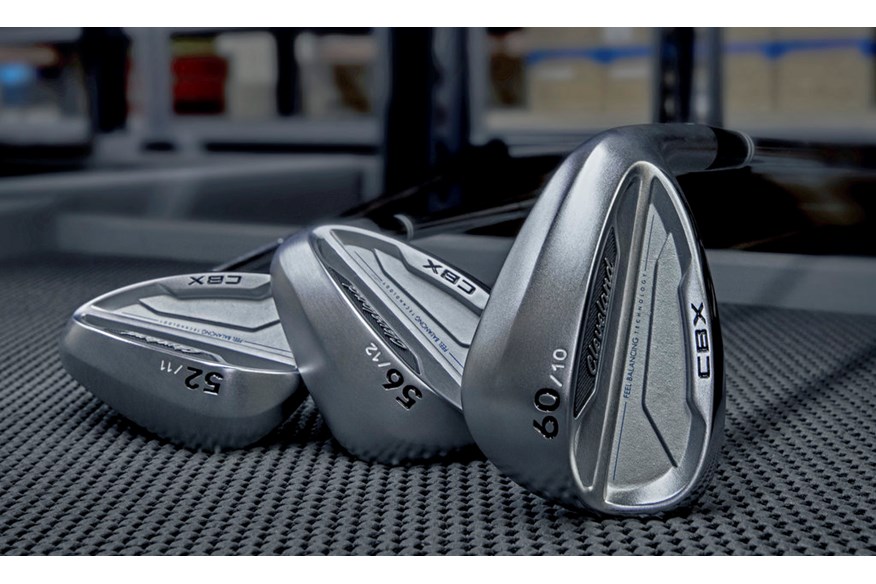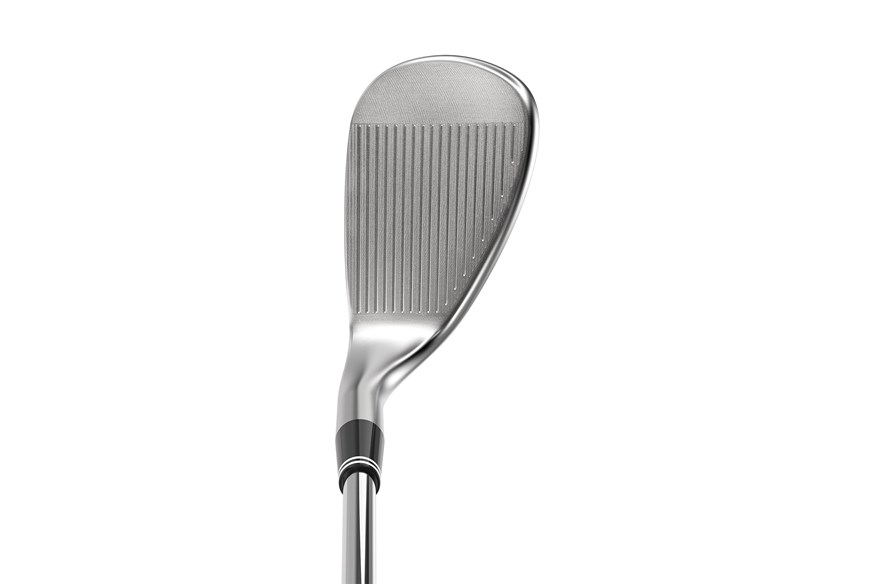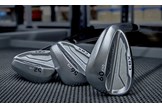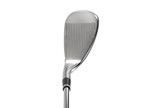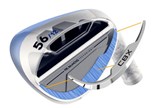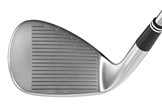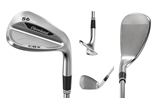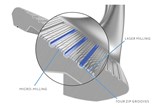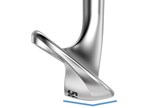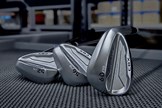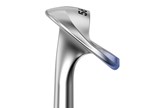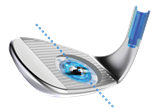Cleveland reveals cavity-back CBX wedges
Last updated:
Cleveland are legendary when it comes to the short game but they reckon 84% of golfers play the game with the wrong wedges.
The new Cleveland CBX wedges have been specifically designed to be a lightweight forgiving wedge aimed at delivering tour level spin and control, but combined with ultimate forgiveness. All in a bid to help you hit shots closer and score lower more often. This is how they’ve done it.
Video Reviews:
Cleveland CBX Wedge
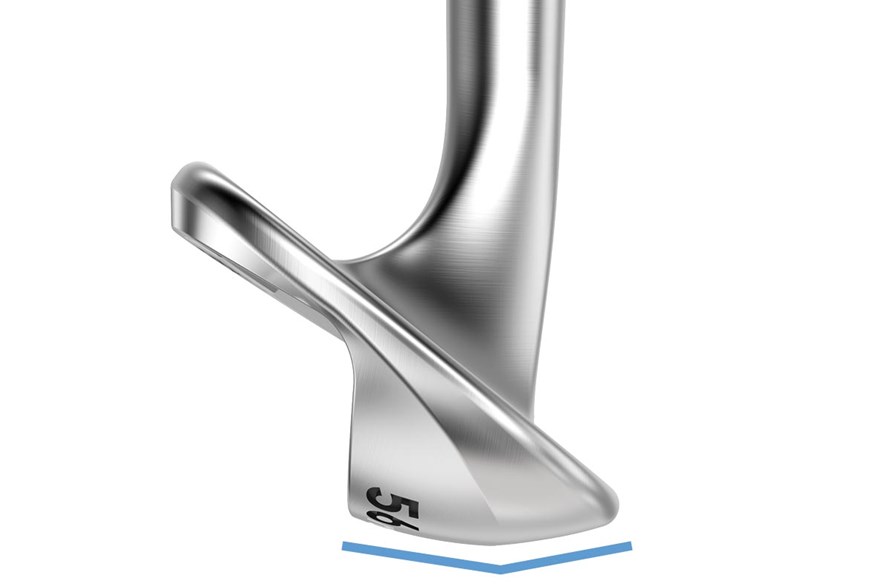
Wide Dual-V Sole
The CBX’s sole width is wider and more forgiving than the companies tour wedge (the RTX-3). Each sole has two distinct areas which Cleveland says allows the leading edge to glide through the turf more smoothly and efficiently (without digging). Yet unlike many wide sole wedges of the past maintains versatility so it’s possible to hit a full array of short game shots. A wider toe (9mm wider than the RTX-3) squares the face at impact and helps escaping bunkers at the first attempt.
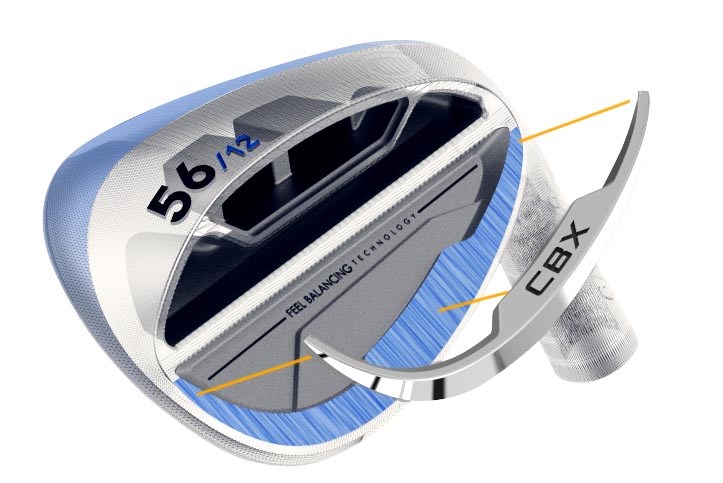
Forgiveness
We all want forgiveness when it comes to drivers and irons but it makes just as much sense to have oodles of forgiveness when it comes to wedges too. By forgiveness we mean “consistency” between good and less perfect strikes which of course means you hit it closer to the flag more often. The CBX’s have a cavity back that’s distributes 76g of mass from the centre of head to the perimeter and into the sole so you get a higher MOI and better distance control on off centre hits.
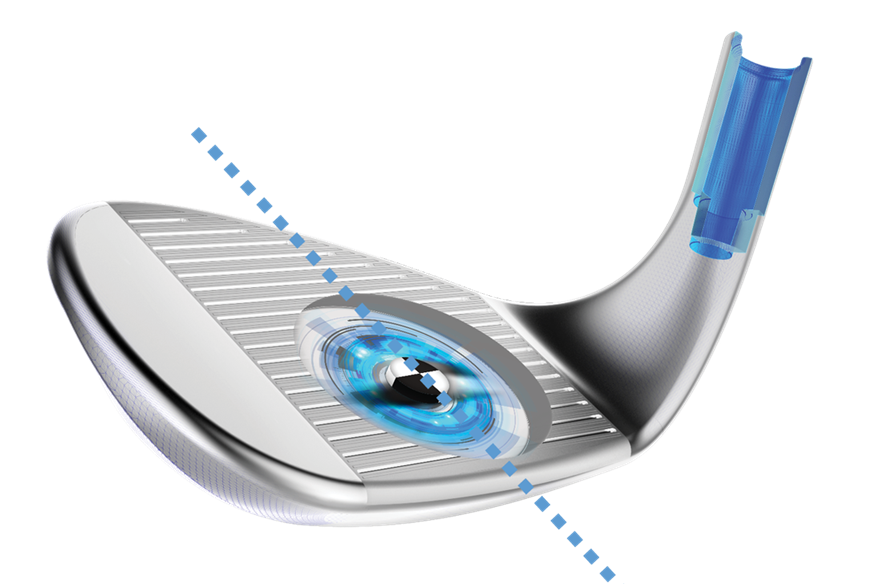
Feel Balancing
Thanks to the shape of wedge and iron bodies the centre of gravity has traditionally been positioned slightly towards the heel, which means when you hit shots from the centre, feel is compromised. With the CBX Cleveland’s engineers have removed weight from the hosel, and by incorporating a tapering sole width (which gets wider towards the toe) more mass is located towards the toe, which draws the centre of gravity 3mm closer to the centre of the face. Cleveland say it generates better feel and increases consistency between shots.
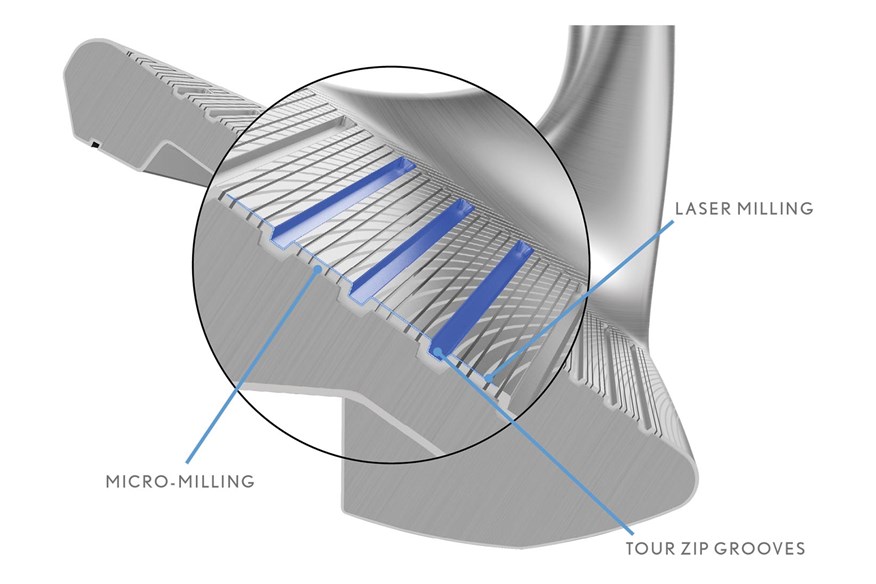
Rotex face tech
Cleveland use three separate technologies to ensure you impart maximum spin on every shot. Tour Zip grooves are deeper and narrower (with a U shape), with a sharp edge radius which they say improves contact and helps eliminate fliers. Every wedge face goes through a two stage micro-milling process to increase contact friction. And because the milling pattern differs between lofts you get maximum spin even when opening the club face. Face roughness is limited by the USGA but to ensure every Cleveland wedge is right on the limit of the rules four tiny laser milled lines between every groove take friction and spin to the max.
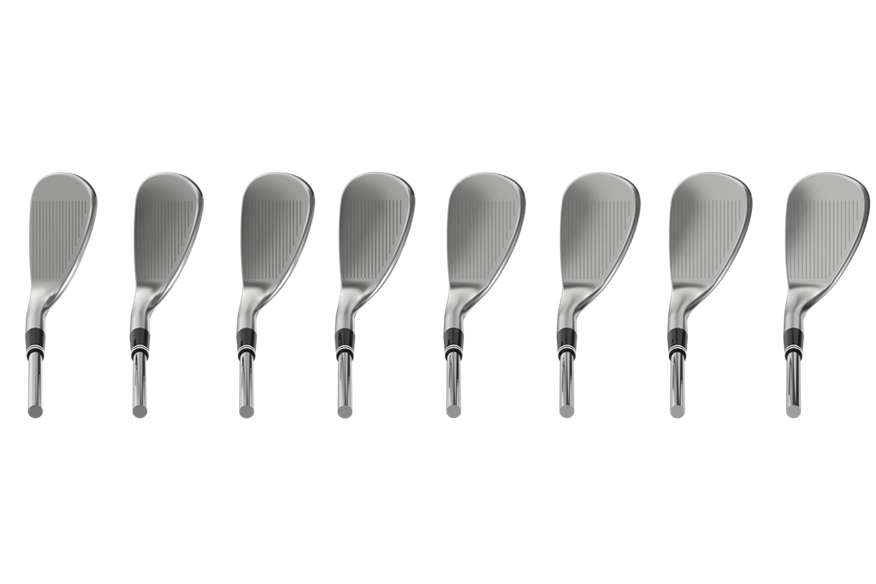
Seamlessly matched to your irons
Cleveland have put in some serious amounts of R&D time to blend the CBX lower lofted wedges to a cavity back iron. As loft increases the head profile seamlessly progresses to a traditional wedge profile. And because there’s a very good chance if you’re playing cavity back irons you’ll have slightly lighter shafts Cleveland have worked with True Temper to come up with a brand new lighter weight 115g Dynamic Gold wedge shaft. The DG 115 is much more closely matched to your iron shafts than a standard wedges, giving a seamless blend through to your short game.
Details:
RRP: £109
Lofts: 46° / 48° / 50° / 52° / 54° / 56° / 58° / 60°
Stock shaft: True Temper Dynamic Gold 115 wedge (s) Rotex Precision wedge (g)
Grip: Cleveland Blue Cap by Lamkin
How much more accurate can you expect to be?
It’s the million-dollar question. During Cleveland’s robot testing they reckon shots from five different locations around the face from a blade wedge ended up with a dispersion width of about 5 – 6 yards. When repeated with the CBX that dispersion dropped to 2-3 yards which pretty impressive, especially as the CBX won’t cost anymore than a traditional bladed wedge.
First test: Cleveland CBX wedge
TG were among the first golfers in the world to try the new Cleveland CBX wedge, on an exclusive trip to Cleveland’s California HQ at the end of July. I was fitted for my ideal wedge set-up using a Trackman launch monitor on the range, before taking the three out (50°, 54°, 60°) for two rounds in the USA.
What immediately struck us was the look; the CBX is pretty much identical to the blade version at address. The game-improving tech is hidden at address, but it’s there to help at impact. And help it did.
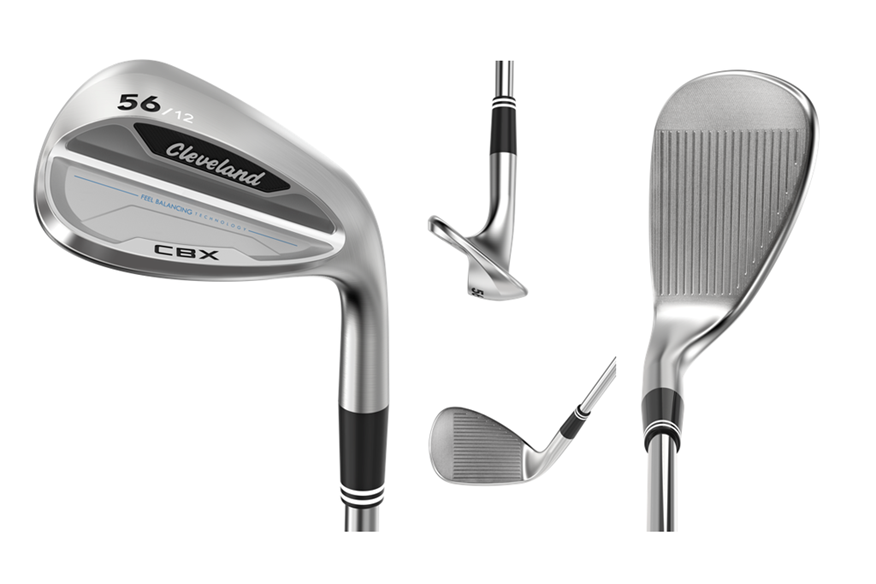
Distance-wise the CBX was more consistent than the RTX 3 on the launch monitor, and strike-wise, on the soft, Bermuda grass courses of California, I fatted far fewer shots with the CBX than the RTX, which doesn’t have the forgiveness of that V-shaped sole.
However, that didn’t impact on its versatility; on a short par-4 I was faced with a 30-yard shot over sand to a tight pin off a fairway lie. I opened the 60° CBX up as much as I dared and took a full swipe, the ball popping in the air and then spinning back towards the hole thanks to those Rotex Face grooves.
The CBX lets you swing hard with confidence. On another par-5 I had 109 yards to a flag perched on a tier; a full swing with the 50° CBX launched it the desired distance, and it spun back two feet to leave a tap-in birdie. I am one of the 84% of golfers who plays cavity-back irons; after one round with the CBX, I’m also now playing cavity wedges.
Chris Jones, Editor, 11 handicap
